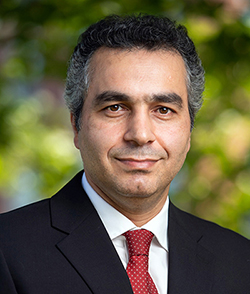HIGH SPEED NETWORKS
Data, video, and imagery particularly warrant high-speed and high-capacity network technologies. Moreover, the emergence of the Internet and Internet-based services such as the World Wide Web (WWW) and the current trend toward converging voice and video services have accelerated the demand for high-speed network technologies. This course provides an in-depth understanding of various existing and emerging high-speed networking technologies. Specific technologies covered include Digital Transmission System, Digital Subscriber Line (DSL), Integrated Service Digital Network (ISDN), Frame Relay, Asynchronous Transfer Mode (ATM), Synchronous Optical Network (SONET), Wavelength Division Multiplexing (WDM), Dense WDM (DWDM), and Optical Networking.
ORGANISATION
Language: The class is taught in English.
Assistant: Select one student to manage, handle and collect the assignments, projects, and Lab activities.
Final Examination: Written examination, (40%)
Coursework 1: 6 pages research paper (individual), (30%)
Coursework 2: Project and Presentation (individual), (30%)
Assistant: Select one student to manage, handle and collect the assignments, projects, and Lab activities.
Final Examination: Written examination, (40%)
Coursework 1: 6 pages research paper (individual), (30%)
Coursework 2: Project and Presentation (individual), (30%)
LECTURE NOTES
- Session 1: Introduction
The need for speed and Quality of service, Emergence of High-speed LANs, Corporate WANs, IP based Internet, ATM networks, Congestion in Data networks, Effect of Congestion, Ideal Performance, Practical Performance, Congestion Control, Traffic Management - Session 2: ATM Technologies
Protocol Architecture, Logical Connections, Cells, Service Categories, ATM Adaptation Layer, Architectural Styles - Session 3: High Speed LANs
Fast Ethernet, Gigabit Ethernet, ATM LANs - Session 4: Network performance measurement and modeling
Queuing analysis: queue behaviour, single server queues, multi-server queues,queues with priorities, network queues, other queuing models, Internet traffic: self-similarity, Ethernet traffic, World-Wide-Web traffic - Session 5: Congestion control and traffic management
Effects of congestion, Congestion and control, Traffic management, Congestion control in packet-switching networks, TCP traffic control: TCP flow and congestion control - Session 6: Internet routing
Graph theory concepts, Least cost paths, Interior routing protocols: internet routing principles, distance-vector protocol – RIP, link- state protocol – OSPF, Exterior routing protocols: path-vector protocols, BGP, IDRP, Multicasting - Session 7: Quality of service (QoS) in IP networks
Integrated service architecture (ISA), Queuing discipline, Differentiated services, Resource reservation protocol (RSVP), Multi-protocol label switching (MPLS), Real-time transport protocol (RTP)


